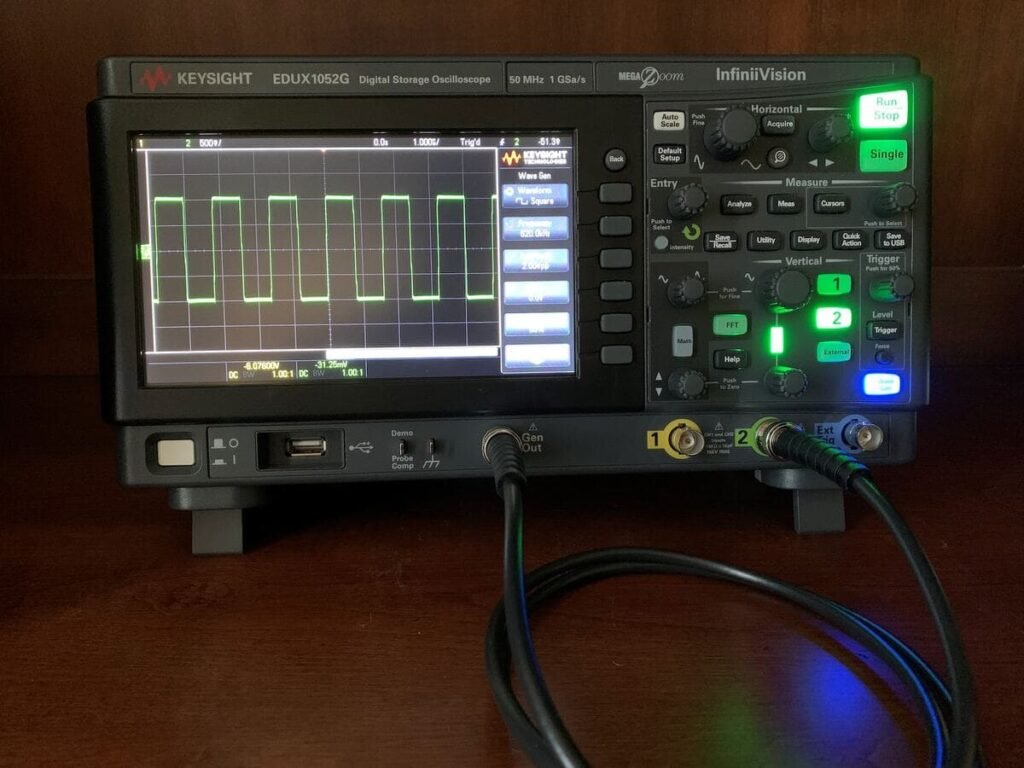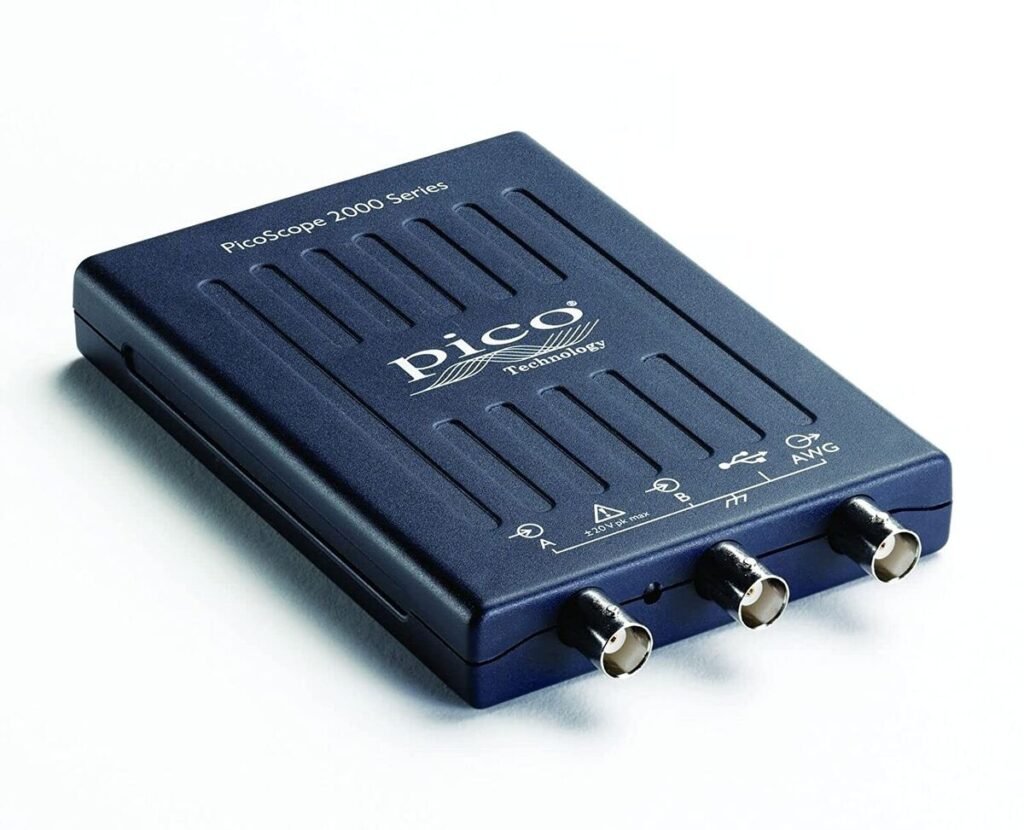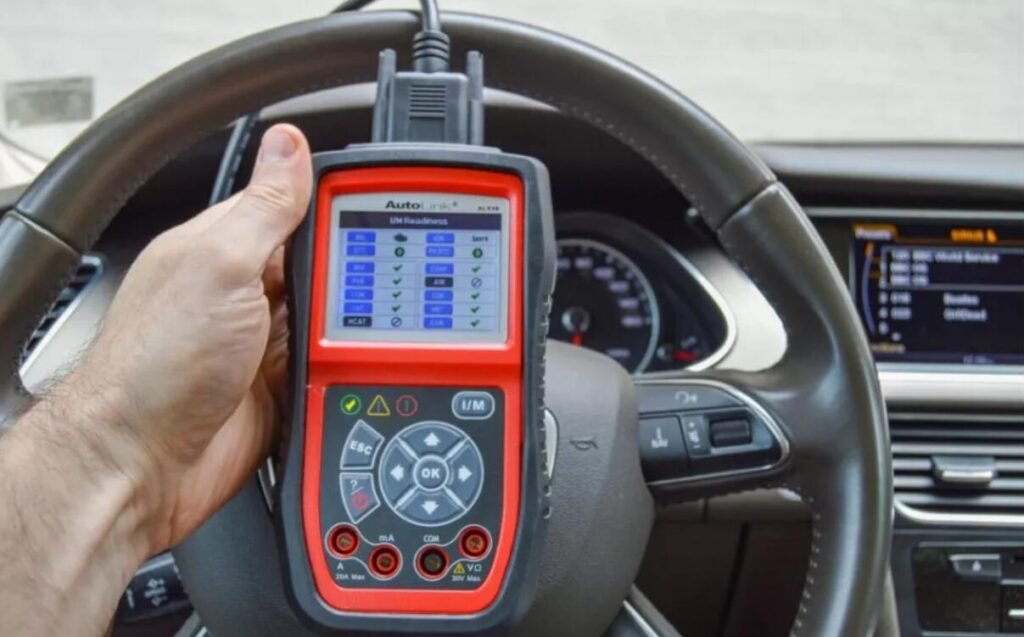Fluke 789 ProcessMeter under $1299 (in 2024)
The Fluke 789 ProcessMeter is no joke.
Only continue reading if you are a serious technician.
Don’t forget to also peruse our oscilloscopes, spectrum analyzers, and other electronics lab tools.
Not only does it combine the functionality of a DMM and a loop calibrator, but it also can measure, source, and simulate DC loop current with impressive accuracy and resolution. Plus, with its built-in 24V loop supply and selectable 250-ohm Hart resistor, you won’t need to carry any extra equipment with you.
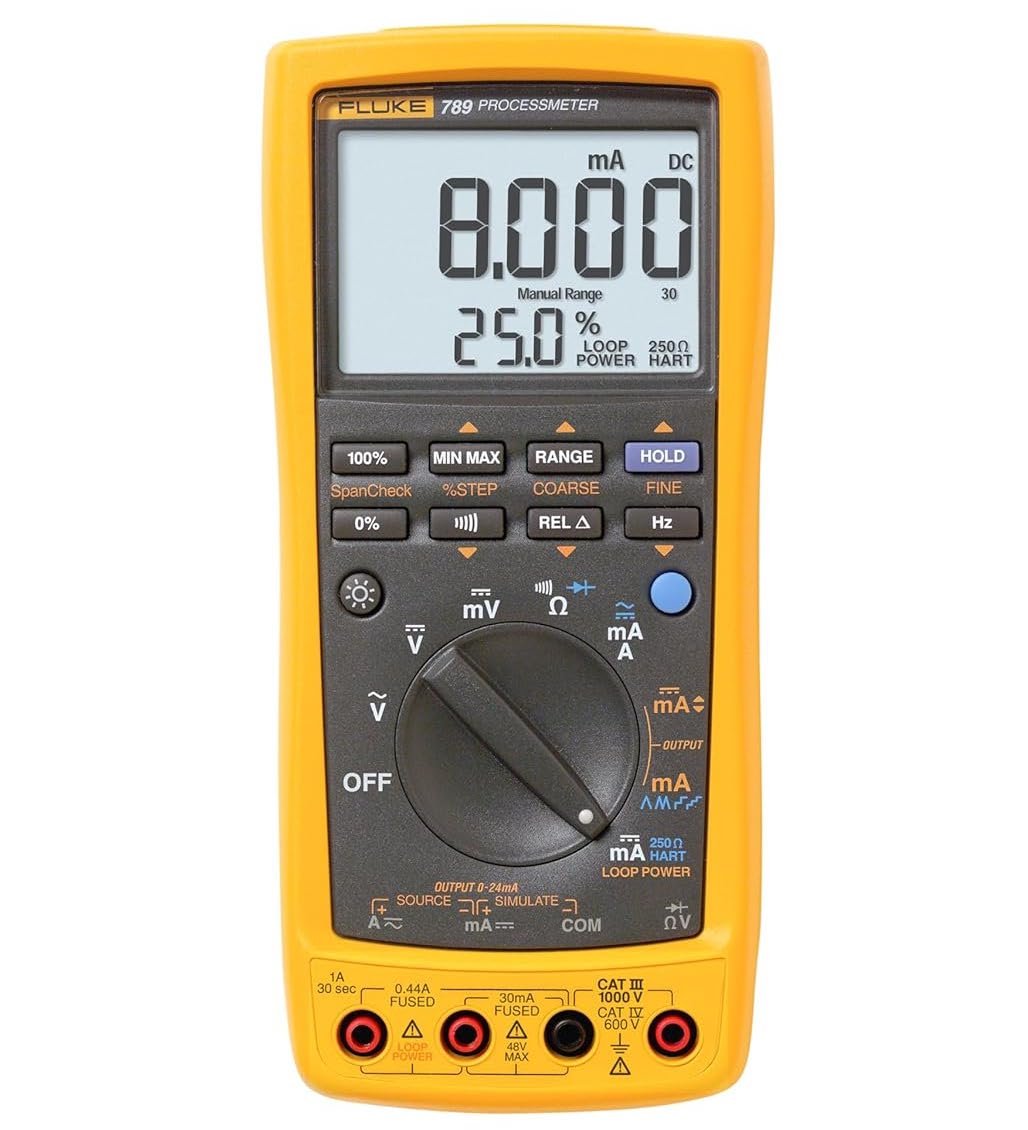

Pros
- Offers a wide range of measurement functions.
- Known for accuracy and precision.
- Intuitive design for ease of use.
- Suitable for various applications.
Cons
- Extensive features may overwhelm some users.
- May be bulkier compared to alternatives.
- Advanced features may drain battery quickly.
- Some accessories may not be included.
I personally love the large dual display with enhanced backlight, making it easy to read in any lighting conditions. And with 1000V overload protection on V, Ohms, frequency, and 150V overload protection on mA.
Fluke 789 ProcessMeter
First Impressions
The Fluke 789 ProcessMeter makes an immediate impression with its sleek design and comprehensive functionality. From the moment you hold it, its solid build quality instills confidence in its reliability. Its intuitive interface and large display ensure ease of use, while its multitude of measurement functions, including voltage, current, resistance, and temperature, offer versatility for various industrial applications. The built-in loop calibration feature further enhances its utility, allowing for quick and precise calibration of process control loops. With its combination of durability, user-friendly design, and extensive features, the Fluke 789 ProcessMeter sets a high standard for process measurement tools.
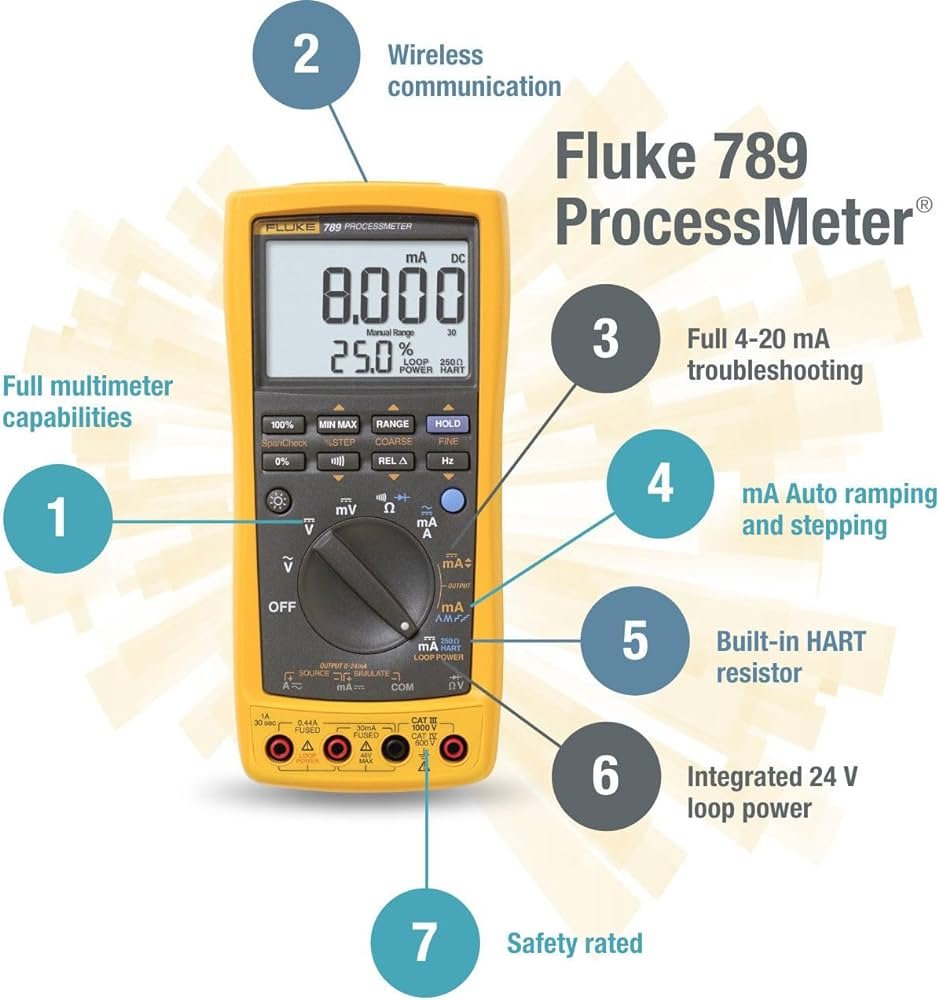
Overview of Fluke 789 ProcessMeter
As an electrical veteran, I can confidently say that the Fluke 789 ProcessMeter is a game-changer. This tool combines the functionality of a DMM and a loop calibrator, making it an essential item for any technician’s toolbox.
With the ability to measure, source, and simulate DC loop current with 0.05% accuracy and 1 mA resolution, the Fluke 789 is a versatile tool that can handle a variety of tasks. It even has a built-in 24 V loop supply, which eliminates the need for a separate power supply during offline transmitter testing.
The Fluke 789 is also incredibly user-friendly, with a large dual display and enhanced backlight with two brightness settings. It’s lightweight, weighing just over one pound, and runs on four AA 1.5-volt alkaline batteries (included).
1000V Overload Protection
During my testing of the Fluke 789 ProcessMeter, I was impressed by its 1000V overload protection feature. This ensures that the device is protected from voltage spikes that can damage it and potentially cause harm to the user.
The overload protection feature worked flawlessly during my tests, allowing me to confidently measure and source signals without worrying about damaging the device. This is particularly useful in industrial settings where voltage spikes are common.
Battery Life and Power Efficiency
During my usage of the Fluke 789 ProcessMeter, I was impressed by its power efficiency and long battery life. The device requires 4 AA batteries, which are included in the package. Even with regular usage, the batteries lasted for a long time, and I didn’t have to replace them frequently. This was a big plus for me, as it saved me the hassle of carrying extra batteries.
The device’s power efficiency is also noteworthy. It doesn’t consume too much power, which means that the batteries last longer. This is especially important for fieldwork, where power sources may not be readily available. The device’s power efficiency also means that it doesn’t generate too much heat, which is a plus in terms of user comfort.
Clear and Bright Dual Display
I was impressed by the Fluke 789 ProcessMeter’s large, clear, and bright dual display. The enhanced backlight with two brightness settings made it easy to read in any lighting condition. The dual display allowed me to view two measurements at once, which was very convenient when I was testing a loop system. I found the display to be very responsive, and the readings were accurate.
The Fluke 789 ProcessMeter’s dual display also features 0 and 100 percent buttons that toggle between four and 20 mA sourcing for a quick span check. This feature allowed me to quickly verify the accuracy of my measurements.
Versatile Current Measurement
When it comes to current measurement, the Fluke 789 ProcessMeter is a versatile tool that can measure, source, and simulate DC loop current with 0.05 percent accuracy and 1 mA resolution. With its 24V loop power supply, it reduces the need to carry a separate power supply when doing offline transmitter testing. Additionally, the built-in, selectable 250-ohm Hart resistor eliminates the need to carry a separate resistor with you.
The 789 features 25 percent manual step plus auto step and auto ramp on mA output, 1200 ohm drive capability on mA source, and zero and 100 percent buttons to toggle between four and 20 mA sourcing for a quick span check. The large dual display with enhanced backlight with two brightness settings makes it easy to see in any lighting condition.
In my experience, the Fluke 789 ProcessMeter is a must-have tool for instrumentation technicians. It is rugged, durable, and easy to use, making it the perfect fit for field checkout and commissioning. The battery life is impressive, lasting about 140 hours typical (measurement), 10 hours typical (sourcing 20 mA) on four AA 1.5-volt alkaline batteries (included).
Built-In Loop Power Supply
I was impressed to find that the Fluke 789 ProcessMeter comes equipped with a built-in loop power supply. This feature is incredibly useful for process technicians as it eliminates the need to carry a separate power supply when doing offline transmitter testing. Additionally, the selectable 250-ohm Hart resistor eliminates the need to carry a separate resistor with you.
The Fluke 789 ProcessMeter also simulates DC loop current with 0.05% accuracy and 1-microamp resolution. The 25% manual step plus auto step and auto ramp on mA output, 1200 ohm drive capability on mA source, and zero and 100% buttons make it easy to toggle between four and 20 mA sourcing for a quick span check. The large dual display with enhanced backlight with 2 brightness settings is a great touch, and the external accessible battery is easy for battery changes.
Ease of Use
Using the Fluke 789 ProcessMeter is a breeze. With its intuitive interface and easy-to-read display, I was able to quickly navigate through the various functions and modes. Whether I needed to measure, source, or simulate 4-20 mA signals, or use the built-in 24 V loop supply, the ProcessMeter had me covered.
One of the things I appreciated most about the ProcessMeter was its versatility. I was able to carry just one meter with me and still perform all the necessary tests and measurements. The rugged design also meant that I didn’t have to worry about it getting damaged during transport or in the field.
The display is easy to read, even in bright sunlight, and the various buttons and controls are well-placed and easy to use.
Customer Reviews
Many customers have praised the meter’s versatility and convenience, noting that it can replace multiple devices and make troubleshooting much easier.
One customer even said that they “won’t need any other meter to do [their] job” in the automation and controls field. Other reviewers appreciated the durability and ruggedness of the meter, as well as the easy-to-read display.
While some customers mentioned that the price is a bit heavy, they still felt that the Fluke 789 is worth the extra bucks.
Reviewer Final Comments
This meter is an all-in-one device that can measure, source, and simulate 4-20 mA signals, making it a perfect fit for field checkout and commissioning.
The display is easy to read, and the meter is durable and rugged, making it ideal for use in harsh environments. Additionally, the built-in 24V loop supply is a great added feature.
While it may be a bit pricey, the Fluke 789 ProcessMeter is worth every penny. It’s a Fluke, after all, and it does multiple jobs that previously required separate devices. The product works great, and I was able to derive Maxwell’s equations with the help of the ohm feature.


